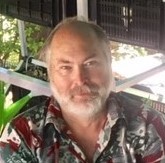FEATURED PAPER
By Dr Professor A. P. van der Merwe, BTech, MBA, PhD
South Africa
ABSTRACT
A model based on a project lifecycle is used to establish a sequence of best-practice events. This is done to determine what needs to be done, when it needs to be done, and how it was done. The concept is that, when overlaid onto an existing project, the sequence reveals discrepancies between ideal and actual performance when compared to best practice. Investigation of these discrepancies may lead to the development of a new model ideally suited to the type of project. The audit was tested repeatedly over a large number of projects in the field, and was found to be best suited to low-cost, short-term special development projects.
1 INTRODUCTION
From start to finish, a project moves through stages similar to an agricultural lifecycle. Investigation shows that the stages of the lifecycle have their own beginning and end. This sequence of events reveals a roadmap of actions that need to be performed on the way towards completing the project. Correct application of a sequence results in the probability of project success. A structural model represents the start of an audit procedure across projects that assists in understanding a process of success factors. An attempt is made to find an efficient application of resources, leading to determination of the most efficient processes.
2 BACKGROUND
As a practising project manager, I was asked if it would be possible to manage a large number of projects simultaneously. I started by investigating literature – books, proceedings and journals, and found a widely-used definition that projects were novel and unique. I also found definitions which stated that all projects have a start and an end, and that time, effort and money were finite. This meant that projects were either unique or had similarities. Further investigation of literature found a deficiency in practical site experience. I next visited existing project sites, and found that the work of the project and the management of the project were two entirely different matters. The work of the project was more like pushing a wheel along the road, whereas the management of the project was more like a roadmap. This meant that finite detail could not be managed, but rather that the work team had to be given a waypoint that, when achieved, would indicate that they were on the right track.
Investigation of the project phenomenon as it occurs in nature revealed a comparative plant-based lifecycle – germination, growth, maturity, and death. As long as productive conditions prevail, the project would continue, but if these conditions ceased to exist, so would the project. In project management, these stages are referred to as feasibility, design, implementation, and close.
More…
To read entire paper, click here
How to cite this paper: van der Merwe, A.P. (2020). Project Audit; PM World Journal, Vol. IX, Issue VIII, August. Available online at https://pmworldlibrary.net/wp-content/uploads/2020/07/pmwj96-Aug2020-van-der-Merwe-Project-Audit-featured-paper.pdf
About the Author

Andre P. van der Merwe, PhD
South Africa
![]()
Professor Andre P. van der Merwe, BTech, MBA, PhD, has 25 years of practical site experience, receiving a management award for innovation by successfully completing more than 2000 simultaneously occurring projects within time and budget. His 20 years of academic experience include being the founder of the Association for Project Management in South Africa, serving as a member of the Global Forum for Education in Project Management, a committee member of the Doctoral Research Colloquium of Europe, a member of the editorial committee of “Management” journal, and a member of MENSA Society. In 2012, André had a traumatic brain injury, leaving him partially sighted. With the help of his wife, Marlette, he remains academically active and contributes to scientific papers.









